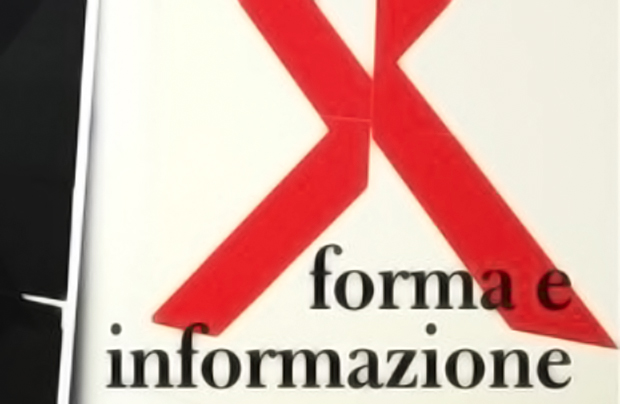
There is an enormous gap in the vast universe of contemporary art between the external manifestation of a work of art (form) and the informational and educational content it provides (information). Many points regarding this matter are clarified in a book by art critic Stefano Pirovano, Forma e informazione. Nuove vie per l’astratto nell’arte del terzo millennio / Form and Information. New thoroughfares for the abstract in art of the Third Millennium.
The author opens with Damien Hirst’s emblematic monographic auction at Sotheby’s London in 2008. Television, newspapers, magazines and the internet all dedicated plenty of space to the artist’s work-operation. Time magazine compared the artist to a rock star since it was not necessary for him to go through any art dealers before arriving at the auction. This process was made possible thanks to the artist’s autonomy in regards to theorists as well as by his great notoriety.
Pirovano points out that before the work of art was even examined by theorists, traditionally accepted as those who provide a key to the interpretation of any work, the media machine of journalists and curators was put into motion; a practically invisible documentary mechanism is activated here which will be inextricably linked to the work from that moment on. It takes the audience less time to obtain the information, which the author equates with software (the legacy of the work) rather than with hardware (its material and sensitive side).
The facility with which it is possible to find this information (diffused through all channels of communication) is a “non-neutral gradient that separates broadcaster and receptor” and therefore filters our relationship with the work itself. In fact, it is more often the case that we learn about it through the media.
In explaining this mechanism, the author draws upon interviews with contemporary artists as well as from the concept of abstraction. He places emphasis upon the way in which metaphysical content has gradually overlapped with the immediacy of realism in art. This process culminated in the 1960s with the insight of Pop Art where the hype surrounding a work was more important than the work itself. The chaos created by the media resulted in a revelation: the symbols and icons of a new mass society.
At this point, it is only fitting to add the contribution offered by new technological media – which has rightfully taken centre stage in the world of art (photography, cinema, the press etc.). Germano Celant states that this new media bears witness to a different way of communicating that “…diminishes the hegemony and the importance of the senses but it exalts the cold, uniform, scientific and philosophical aspects of the psycho-physical or technological medium adopted (Celant, Artmix, 2008)”.
From this viewpoint, we can understand how the ancestral relationship between subject and representation had been altered in function of that which exploits the media to display the work. Today’s current need to preserve a work’s representation and documentation along with its material is derived from this.
The author – to his great credit – has brought to light that which nowadays risks being overlooked: our relationship with culture and artistic culture constantly conveyed through mass media (always a good point to keep in mind). Today, the basis for the survival of a work of art over time must not be limited to the potency of the media’s hype. Actually, the most important factor of its survival is its authentic knowledge. Pirovano tells us that knowledge is «a fertilizer ceteris paribus that is much more effective and longer-lasting than money.»
Stefano Pirovano, Forma e informazione. Nuove vie per l’astratto nell’arte del terzo millennio, Johan e Levi, Milan 2009
Images
(1 cover) Damien Hirst poses beside his work of art ‘The Incredible Journey‘ at Sotheby’s in London on Monday, September 8 via Art Daily (2) Stefano Pirovano, Forma e informazione. Nuove vie per l’astratto nell’arte del terzo millennio (collage of the cover)







































